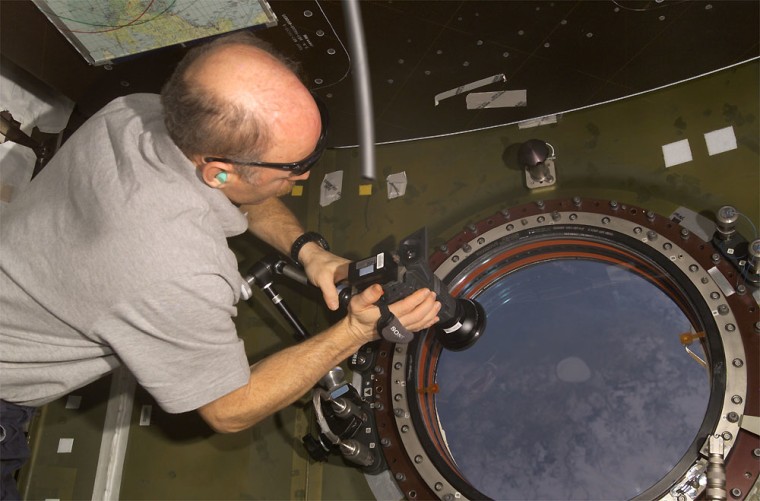The crew of the International Space Station is preparing to repair the damage they accidentally did to the station’s main window when they incorrectly disconnected an air hose that had been leaking air into space last month. The delicate work was originally scheduled for Wednesday but was deleted from the crew’s schedule at the last minute and has not yet been rescheduled.
The 20-inch window in the U.S. lab module is the most optically pure window ever installed on a human spacecraft. It was contaminated on Jan. 11 by the inadvertent introduction of moist, dusty cabin air into what had been a vacuum section between the two main panes.
Consequently, to prevent condensation or the growth of airborne microorganisms that could permanently scar the glass, the crew has had to keep the window’s exterior shutter closed almost continuously.
This in turn has greatly constrained the "Crew Earth Observation" program during which the station's residents manually photograph selected surface targets. Also affected was an experiment that lets U.S. students take images through a still camera; the camera was moved to a smaller, less clear window in the Russian section of the station.
Using special equipment recently delivered by an unmanned Russian cargo ship, ISS science officer Michael Foale will gradually vent the unwanted air out into space. Care is required, according to NASA reports obtained by MSNBC.com, in order to avoid “flash condensation” that could permanently mar the pristine window surface and thus diminish its science value.
Why the leak happened
The original air leak had been in a U-shaped flex hose that ran between two "quick disconnect" ports along the window edge. One port was connected to the "interpane volume" between the two main panes, and the other port led directly overboard into space.
As first reported by MSNBC.com, NASA has concluded that the damage to the hose was probably caused by crew members misusing it as a handhold since it was installed three years ago. The periodic stress on the hose eventually led to a small gap that allowed air to seep out slowly.
“There’s not a lot of places down by the window to really hold on to,” explained William Gerstenmaier, manager of the space station program. “This is an awfully attractive device to touch from a crew standpoint.”
Safety engineers characterized the design error as “foreseeable misuse”, a legal term in assessing product liability. Although on-board documentation clearly stated, “WARNING: Do Not Use Flex Hose As A Handhold”, no other nearby handholds were installed (“Warning” in NASA usage means that hardware damage can result if the advice is ignored). Misuse of delicate hardware near windows as handholds had also been documented during the Skylab space station program (1973-1974) but this “lesson learned” had evidently been overlooked.
Haste makes space waste
On ISS, the damage from the leak was compounded by the crew’s hasty detaching of the flex hose once the leak was isolated there. One of the crewmen first unhooked the vacuum end of the hose, which allowed cabin air to be sucked into what had been the pristine vacuum of the interpane area. The correct sequence would have been to unhook the interpane end of the hose first, sealing that port, followed immediately by the vacuum end.
“If we had to do it again we would take off the other end first,” flight director Joel Montalbano said last month. “We did put some amount of air between the panes.”
In recent days, Foale has prepared the repair operation by tightening the quick disconnect couplings by the window.
“Carefully prepared procedures were uplinked for the very slow tightening/throttling technique designed to avoid flash condensation,” according to an internal NASA station status report. “Mike today [Feb 10] first practiced the throttling technique by using male and female nitrogen/oxygen pressure adapters, an internal sample adapter, and vacuum access jumpers to slowly vent cabin air into an evacuated equipment volume.”
The actual depressurization is to use these items plus hardware called the fluid system servicer and the lab’s vent/relief isolation valve. As described on NASA’s "Human Spaceflight" Web site, the action will involve “the venting of condensation from the inner glass in the window”.
